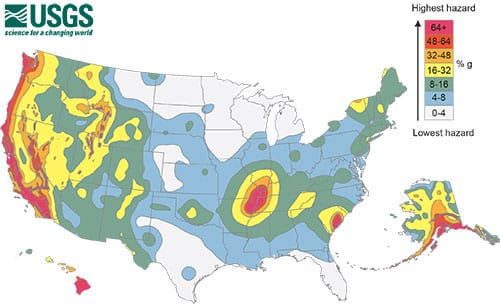 According to FEMA, “seismic risks are the harm or losses that are likely to result from exposure to seismic hazards. They are usually measured in terms of expected casualties (fatalities and injuries), direct economic losses (repair and replacement costs), and indirect economic losses (income lost during downtime resulting from damage to private property or public infrastructure). Other, more specific measures of risk are also used for disaster planning, such as probable volumes and durations of utility outages and displaced households, and amounts of debris likely to be generated.”
According to FEMA, “seismic risks are the harm or losses that are likely to result from exposure to seismic hazards. They are usually measured in terms of expected casualties (fatalities and injuries), direct economic losses (repair and replacement costs), and indirect economic losses (income lost during downtime resulting from damage to private property or public infrastructure). Other, more specific measures of risk are also used for disaster planning, such as probable volumes and durations of utility outages and displaced households, and amounts of debris likely to be generated.”
NDDS provides seismic studies in areas prone to seismic activity. These studies, also known as Probable Maximum Loss (PML) assessments are compliant with ASTM E2026-07 and ASTM 2557-07. The assessment studies the proximity of faults within the geographic location of a subject property, expected possible strength, type of construction, physical setting of the property and geological conditions to render an estimate of cost to restore the structure to pre-earthquake conditions. The estimate is expressed as a percentage of the replacement value with regard to earthquake damage to improvements likely to occur during a seismic event.
Probable Maximum Loss Reports are typically required by many lenders including Fannie Mae, Freddie Mac, CMBS, and Life Companies in Zones 3 and 4.
Sample Probable Maximum Loss Report
